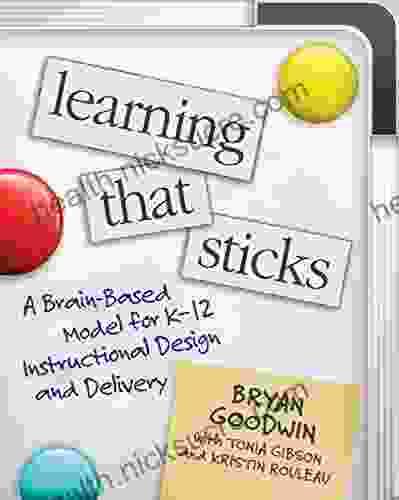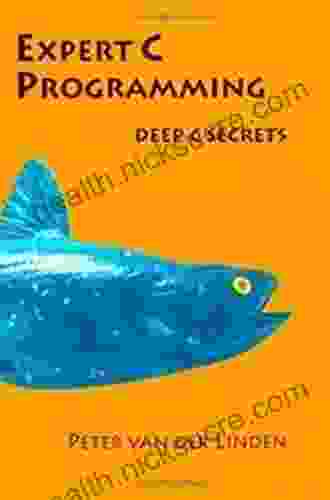Unveiling the Brain-Based Model: A Revolutionary Approach to Instructional Design and Delivery

The human brain is a marvel of complexity and its intricate workings have captivated scientists and educators for centuries. With the advent of neuroimaging techniques, researchers have gained unprecedented insights into the brain's role in learning, memory, and cognition. These discoveries have profoundly influenced the field of instructional design, giving rise to the brain-based model—a revolutionary approach that harnesses the brain's natural learning mechanisms to enhance teaching and learning outcomes.
Pillars of the Brain-Based Model
The brain-based model is grounded on several key pillars that have been meticulously derived from cognitive neuroscience research. These pillars include:
4.8 out of 5
| Language | : | English |
| File size | : | 715 KB |
| Text-to-Speech | : | Enabled |
| Screen Reader | : | Supported |
| Enhanced typesetting | : | Enabled |
| Word Wise | : | Enabled |
| Print length | : | 209 pages |
1. Active Learning:
The brain thrives on active engagement, and learning is most effective when students are actively involved in the process. The brain-based model emphasizes hands-on activities, problem-solving, simulations, and other learner-centered approaches that foster active participation and deep understanding.
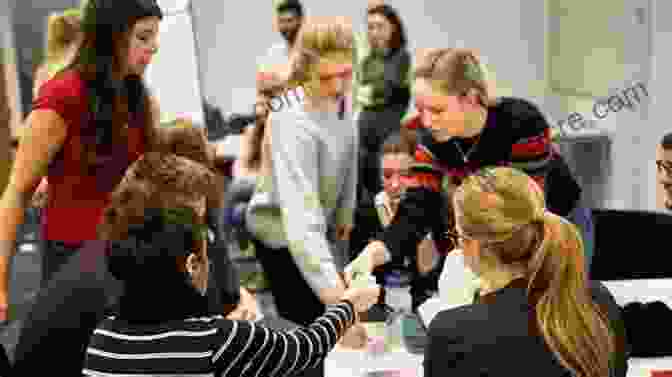
2. Spaced Repetition:
For information to be effectively encoded into long-term memory, it requires repeated retrieval from short-term memory. The brain-based model advocates for spaced repetition strategies, such as flashcards, practice exercises, and review sessions, which gradually strengthen memory traces and facilitate long-term retention.

3. Chunking:
The brain has a limited capacity for processing information at once. The brain-based model suggests breaking down complex content into smaller, manageable chunks or units. This facilitates better comprehension, reduces cognitive load, and enhances retention.

4. Multisensory Input:
The brain processes information through multiple sensory channels, including visual, auditory, kinesthetic, and tactile. The brain-based model incorporates a variety of modalities to cater to different learning styles and engage multiple senses.
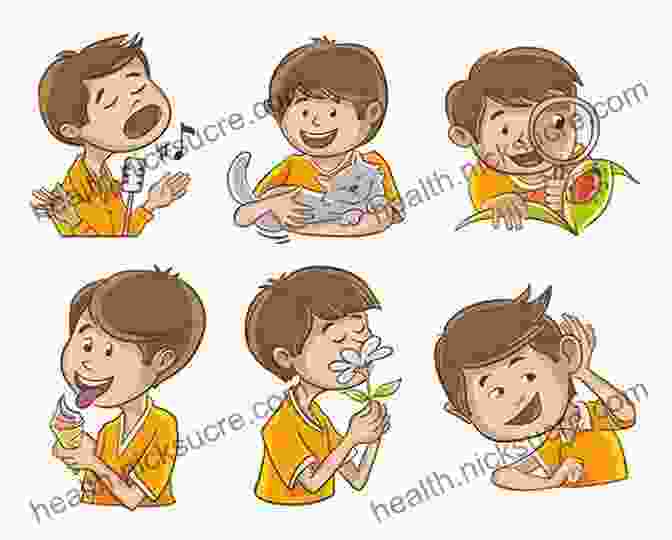
5. Emotional Engagement:
Emotions play a significant role in learning and memory. The brain-based model recognizes the importance of creating emotionally engaging learning experiences that evoke positive emotions and motivate students.

12 Instructional Design and Delivery Strategies Based on the Brain-Based Model
Drawing upon the pillars of the brain-based model, instructional designers and educators can implement a wide range of effective teaching strategies that align with the brain's natural learning mechanisms. The following 12 strategies provide practical guidance for designing and delivering engaging and brain-friendly learning experiences:
1. Gamification:
Incorporating game elements, such as rewards, points, and challenges, can tap into the brain's motivation and reward systems, making learning more enjoyable and engaging.
2. Inquiry-Based Learning:
Guiding students through a process of questioning, exploring, and investigating encourages curiosity and fosters critical thinking skills.
3. Constructivism:
Encouraging students to actively construct their own knowledge through hands-on experiences and social interactions promotes deep understanding and empowers learners.
4. Storytelling:
Harnessing the power of narrative to convey information engages students emotionally and makes learning more memorable.
5. Visuals and Graphics:
Utilizing images, diagrams, and charts helps to visualize abstract concepts and enhance comprehension for visual learners.
6. Metacognition:
Encouraging students to reflect on their own learning processes, strengths, and weaknesses fosters self-awareness and promotes independent learning.
7. Cooperative Learning:
Structured group work allows students to collaborate, share ideas, and learn from each other, promoting social and cognitive development.
8. Feedback and Assessment:
Providing timely and constructive feedback is crucial for reinforcing learning, identifying areas for improvement, and guiding students towards success.
9. Technology Integration:
Leveraging technology, such as interactive simulations, virtual reality, and adaptive learning platforms, can enhance engagement and provide personalized learning experiences.
10. Experiential Learning:
Providing opportunities for students to engage in real-world experiences, such as internships, field trips, and service learning, facilitates practical application of knowledge and skills.
11. Differentiation:
Tailoring instruction to meet the diverse learning needs of students, such as adjusting pacing, providing additional support, or offering alternative assignments, ensures that all learners can access and succeed in the curriculum.
12. Brain Breaks:
Incorporating short breaks throughout learning sessions allows the brain to rest and recharge, promoting sustained focus and attentiveness.
The brain-based model has revolutionized the field of instructional design and delivery by providing a scientific foundation for effective teaching practices. By harnessing the brain's natural learning mechanisms, educators can create engaging and memorable learning experiences that empower students to achieve their full academic potential. As research in neuroeducation continues to expand, we can expect further advancements in our understanding of the brain's role in learning, leading to even more innovative and effective instructional strategies.
4.8 out of 5
| Language | : | English |
| File size | : | 715 KB |
| Text-to-Speech | : | Enabled |
| Screen Reader | : | Supported |
| Enhanced typesetting | : | Enabled |
| Word Wise | : | Enabled |
| Print length | : | 209 pages |
Do you want to contribute by writing guest posts on this blog?
Please contact us and send us a resume of previous articles that you have written.
 Fiction
Fiction Non Fiction
Non Fiction Romance
Romance Mystery
Mystery Thriller
Thriller SciFi
SciFi Fantasy
Fantasy Horror
Horror Biography
Biography Selfhelp
Selfhelp Business
Business History
History Classics
Classics Poetry
Poetry Childrens
Childrens Young Adult
Young Adult Educational
Educational Cooking
Cooking Travel
Travel Lifestyle
Lifestyle Spirituality
Spirituality Health
Health Fitness
Fitness Technology
Technology Science
Science Arts
Arts Crafts
Crafts DIY
DIY Gardening
Gardening Petcare
Petcare Milton Gussow
Milton Gussow Vitalis I Valentine
Vitalis I Valentine Meredith L Jacobs
Meredith L Jacobs Teri Moser Woo
Teri Moser Woo Jenara Nerenberg
Jenara Nerenberg Matthew Syed
Matthew Syed Suzanne Nottingham
Suzanne Nottingham W Edwards Deming
W Edwards Deming Alan Watts
Alan Watts Allen J Christenson
Allen J Christenson Olajumoke Adenowo
Olajumoke Adenowo Allison Dolan
Allison Dolan Helen Macdonald
Helen Macdonald Roger Bannister
Roger Bannister Debra L Martin
Debra L Martin Bill Hendricks
Bill Hendricks Emily Parke Chase
Emily Parke Chase Edmund Richardson
Edmund Richardson Phil Hornshaw
Phil Hornshaw Theodore B Sauselein
Theodore B Sauselein Cinda Williams Chima
Cinda Williams Chima Gary Sizer
Gary Sizer Stephen Haddelsey
Stephen Haddelsey Stephen R Covey
Stephen R Covey Eickhel Mendoza
Eickhel Mendoza Joseph Harkreader
Joseph Harkreader Chris Cannon
Chris Cannon Valerie Gilpeer
Valerie Gilpeer John Bul Dau
John Bul Dau Daniel J Levitin
Daniel J Levitin Stuart Holmes Coleman
Stuart Holmes Coleman Pamela Douglas
Pamela Douglas Linda Martella Whitsett
Linda Martella Whitsett Robert M Sapolsky
Robert M Sapolsky Douglas Nicholas
Douglas Nicholas Raychelle Cassada Lohmann
Raychelle Cassada Lohmann Gary Leland
Gary Leland Kenneth Igiri
Kenneth Igiri Ian Westermann
Ian Westermann Elce Junior Lauriston
Elce Junior Lauriston Karen Bonnell
Karen Bonnell Frederick Mosteller
Frederick Mosteller Allison Alexy
Allison Alexy Carlos Castaneda
Carlos Castaneda Vivian Gornick
Vivian Gornick William Stott
William Stott Etienne Noumen
Etienne Noumen Debi Pearl
Debi Pearl Tim Baker
Tim Baker David M Killoran
David M Killoran Eugen Herrigel
Eugen Herrigel Rachel Caine
Rachel Caine The Editors Of Outside Magazine
The Editors Of Outside Magazine Judith Rich Harris
Judith Rich Harris Emily Thiede
Emily Thiede Tom Babin
Tom Babin Andrie De Vries
Andrie De Vries David Hurst Thomas
David Hurst Thomas Joanna Foley Rd
Joanna Foley Rd Jay Blahnik
Jay Blahnik Jared Cohen
Jared Cohen Ronald E Mickens
Ronald E Mickens Mourad Boufadene
Mourad Boufadene Kaitlyn Hill
Kaitlyn Hill Pure Calisthenics
Pure Calisthenics Joel Thomas Chopp
Joel Thomas Chopp Bruce Tremper
Bruce Tremper David Hancock
David Hancock James Kipling
James Kipling Allistair Mccaw
Allistair Mccaw Vincent Schilling
Vincent Schilling Aliza Kelly
Aliza Kelly Allen Morris Jones
Allen Morris Jones Alivia Stephens
Alivia Stephens Winston Churchill
Winston Churchill The Dark Lords
The Dark Lords Arianna Brooks
Arianna Brooks Amby Burfoot
Amby Burfoot Sarah Grison
Sarah Grison Ben Greenfield
Ben Greenfield Roy Clark
Roy Clark Alison Pearlman
Alison Pearlman Edmund G R Kraal
Edmund G R Kraal Frederick Courteney Selous
Frederick Courteney Selous Nikki Solano
Nikki Solano Allen M Hornblum
Allen M Hornblum Lynn Rush
Lynn Rush Deborah Ann Davis
Deborah Ann Davis Andrew Benfield
Andrew Benfield Daniel Stewart
Daniel Stewart Mandi Hickman
Mandi Hickman Steven J Burton
Steven J Burton Erica Abbett
Erica Abbett Allison Mcdonald Ace
Allison Mcdonald Ace Randy Russell
Randy Russell Jonathan Moeller
Jonathan Moeller Carolyn Shearlock
Carolyn Shearlock Ken Cohen
Ken Cohen Jim Downs
Jim Downs Jack Smith
Jack Smith Julie Currin
Julie Currin Fluent In Korean
Fluent In Korean Chris Fox
Chris Fox Alistair Higham
Alistair Higham Jonathan St B T Evans
Jonathan St B T Evans Amy Saltzman
Amy Saltzman Toru Toba
Toru Toba Jonathan E Steinhart
Jonathan E Steinhart Karen Murphy
Karen Murphy Katy Milkman
Katy Milkman Tami Overhauser
Tami Overhauser Laura Randall
Laura Randall Ann C Logue
Ann C Logue Michele Stanten
Michele Stanten Ryan Hall
Ryan Hall Aly Raisman
Aly Raisman Gerd Gigerenzer
Gerd Gigerenzer Jennifer Louden
Jennifer Louden C S Wilde
C S Wilde Alexander Clarke
Alexander Clarke Joshua Elliot James
Joshua Elliot James Diana Korte
Diana Korte Grant S Lipman
Grant S Lipman Harald B Teicher
Harald B Teicher Eli Saslow
Eli Saslow Lynn Acton
Lynn Acton Josephine Perry
Josephine Perry John Novosel Jr
John Novosel Jr Richard Kaczynski
Richard Kaczynski Itzik Ben Gan
Itzik Ben Gan Jason Padgett
Jason Padgett Ronald Hutton
Ronald Hutton Sabatino Moscati
Sabatino Moscati Hilda Jarman Muir
Hilda Jarman Muir C Calvin Jones
C Calvin Jones Myrna Blyth
Myrna Blyth Anna Costaras
Anna Costaras Glenn Tinnin
Glenn Tinnin Jeffrey E Young
Jeffrey E Young Linda A Curtis
Linda A Curtis Naomi Kokoricha
Naomi Kokoricha Jeff Brent
Jeff Brent Mark Beauregard
Mark Beauregard Kaylee Cole
Kaylee Cole Kate Wood
Kate Wood Marc Vachon
Marc Vachon Joe Sparrow
Joe Sparrow Meredith Russo
Meredith Russo Jim C Hines
Jim C Hines Kate Clifford Larson
Kate Clifford Larson Christian Asonye
Christian Asonye Brett Lee Scott
Brett Lee Scott Simone Milasas
Simone Milasas Somaiya Daud
Somaiya Daud Julie Schwietert
Julie Schwietert Bogdan Ivanov
Bogdan Ivanov Carla Mooney
Carla Mooney Grace Lindsay
Grace Lindsay Marianne Williamson
Marianne Williamson Janet E Wall
Janet E Wall Wendelin Van Draanen
Wendelin Van Draanen L H Nicole
L H Nicole Lisa Marshall
Lisa Marshall Judith Mckay
Judith Mckay Jim Bell
Jim Bell Charlotte Runcie
Charlotte Runcie Lewis Carroll
Lewis Carroll Justin J Exner
Justin J Exner Karen Wambach
Karen Wambach Robert Penn Warren
Robert Penn Warren S Allen Counter
S Allen Counter Despina Meris
Despina Meris Jim Mancuso
Jim Mancuso Charles J Robinson
Charles J Robinson Jimena Canales
Jimena Canales Edwin Amenta
Edwin Amenta Sharon Weinberger
Sharon Weinberger Eric Newby
Eric Newby Dr Danielle Ward
Dr Danielle Ward Bobby Clampett
Bobby Clampett Catherine Gildiner
Catherine Gildiner Jen Torborg
Jen Torborg Alicia Thomas Woolf
Alicia Thomas Woolf Lexie Scott
Lexie Scott Walter Isaacson
Walter Isaacson Daniel Mendelsohn
Daniel Mendelsohn Pasco Valana
Pasco Valana Cate Stillman
Cate Stillman Sam Jefferson
Sam Jefferson Todd Wilbur
Todd Wilbur Cy Tymony
Cy Tymony Lydia Sherrer
Lydia Sherrer Dave Pelz
Dave Pelz Alister E Mcgrath
Alister E Mcgrath Carlo Ancelotti
Carlo Ancelotti Nick Riley
Nick Riley Lynn Stafford Yilmaz
Lynn Stafford Yilmaz P Schreiber
P Schreiber Rick Johnson
Rick Johnson Joseph Fort Newton
Joseph Fort Newton Emma Shelford
Emma Shelford Greg Strandberg
Greg Strandberg Annabeth Headrick
Annabeth Headrick Amy Wenzel
Amy Wenzel David F Anderson
David F Anderson Kelsey Banfield
Kelsey Banfield Allen G Taylor
Allen G Taylor Allison Arevalo
Allison Arevalo Beth Cavenaugh
Beth Cavenaugh Greg Henry
Greg Henry Brian Lopes
Brian Lopes Allen Carr
Allen Carr Dennis Georgatos
Dennis Georgatos Y R Davis
Y R Davis William W Dressler
William W Dressler Matthieu Auzanneau
Matthieu Auzanneau Lsatmax Lsat Prep
Lsatmax Lsat Prep Brenda Boyd
Brenda Boyd Gail Steketee
Gail Steketee Giancarlo Lemmi
Giancarlo Lemmi Rene Almeling
Rene Almeling Kathleen Bachynski
Kathleen Bachynski Allan G Bluman
Allan G Bluman Kevin West
Kevin West Jason Durham
Jason Durham Paul J Kosmin
Paul J Kosmin Sean Patrick
Sean Patrick Joe Vasicek
Joe Vasicek Allen Dulles
Allen Dulles Greg Moran
Greg Moran Jennifer Waldburger
Jennifer Waldburger Linda Greenlaw
Linda Greenlaw Mark F Sohn
Mark F Sohn George M Johnson
George M Johnson The School Of Life
The School Of Life Joe Kenn
Joe Kenn Mara Krechevsky
Mara Krechevsky Henry Cloud
Henry Cloud Allen N Mendler
Allen N Mendler Tim Hodkinson
Tim Hodkinson James F Mckenzie
James F Mckenzie Joosr
Joosr Jim Cheney
Jim Cheney Frank Christianson
Frank Christianson Maria Rickert Hong
Maria Rickert Hong Allan Kardec
Allan Kardec Paul Schullery
Paul Schullery Allen Everett
Allen Everett Leonard Shlain
Leonard Shlain Carrot Quinn
Carrot Quinn Shobi Nolan
Shobi Nolan Tim Roughgarden
Tim Roughgarden Lisa M Rose
Lisa M Rose Liz Clark
Liz Clark Signe Pike
Signe Pike John Shewey
John Shewey Kevin Leman
Kevin Leman Eric Naguski
Eric Naguski Mark Kistler
Mark Kistler Jeff Hawkins
Jeff Hawkins Saint Teresa Of Avila
Saint Teresa Of Avila Nevin Martell
Nevin Martell David Eagleman
David Eagleman Alisha J Brown
Alisha J Brown Geoff Salmon
Geoff Salmon Suzanne Alderson
Suzanne Alderson Grant Petersen
Grant Petersen Richard H Thaler
Richard H Thaler Kenji Tokitsu
Kenji Tokitsu Randy Olson
Randy Olson James Patterson
James Patterson Allison Tyson
Allison Tyson Priya Ardis
Priya Ardis Ashley D Kendall
Ashley D Kendall William A Haviland
William A Haviland Dan Abrahams
Dan Abrahams George Buehler
George Buehler Sylvia Larsen
Sylvia Larsen Alina A Von Davier
Alina A Von Davier Brian Boone
Brian Boone Steve J Martin
Steve J Martin Dennis Jarecke
Dennis Jarecke Susan Neiman
Susan Neiman Dr Ron M Horner
Dr Ron M Horner Matt Hart
Matt Hart Lennard Bickel
Lennard Bickel Clive Cussler
Clive Cussler William B Helmreich
William B Helmreich Alicia Jasinska
Alicia Jasinska Daniel J Siegel
Daniel J Siegel Christopher Bruhn
Christopher Bruhn Sportsman S Connection
Sportsman S Connection Arthur Aughey
Arthur Aughey Bret Hart
Bret Hart Dr Nadine Sinclair
Dr Nadine Sinclair Peter Van Der Linden
Peter Van Der Linden Natasha Devon
Natasha Devon Julie Morgenstern
Julie Morgenstern Stephen E Flowers
Stephen E Flowers Kwame Onwuachi
Kwame Onwuachi Segun Adebajo
Segun Adebajo Paul D Brinkman
Paul D Brinkman Robert Taylor
Robert Taylor Dr Fiona Mcpherson
Dr Fiona Mcpherson Iain Gately
Iain Gately 10th Edition Kindle Edition
10th Edition Kindle Edition Linda Barrett Osborne
Linda Barrett Osborne Victor Canning
Victor Canning Selene Yeager
Selene Yeager Jeremy Evans
Jeremy Evans Allison Norfolk
Allison Norfolk Philip Gosse
Philip Gosse Novak Djokovic
Novak Djokovic Maurice Isserman
Maurice Isserman Rebecca St James
Rebecca St James Allison Schrager
Allison Schrager Mark Dice
Mark Dice J Richard Gott
J Richard Gott Bill Varney Jr
Bill Varney Jr Michael Reist
Michael Reist Mike Wallace
Mike Wallace Charles Conn
Charles Conn Barbara De Angelis
Barbara De Angelis Bill Horn
Bill Horn Molly Forbes
Molly Forbes Alistair Brownlee
Alistair Brownlee Liz Evers
Liz Evers Dennis Overbye
Dennis Overbye Neely Spence Gracey
Neely Spence Gracey Karen Blumenthal
Karen Blumenthal John Bargh Ph D
John Bargh Ph D Kim Heacox
Kim Heacox Scott Smith
Scott Smith D C Fergerson
D C Fergerson Robin Riley
Robin Riley Rex Allen Jones Ii
Rex Allen Jones Ii Rex L Forehand
Rex L Forehand Tami Asars
Tami Asars Alison Scott Wright
Alison Scott Wright Matthew Mccoy
Matthew Mccoy Felix Marks
Felix Marks Dan Miller
Dan Miller Allan Trevor
Allan Trevor Elliot Aronson
Elliot Aronson Gavin Fairbairn
Gavin Fairbairn Paul S Auerbach
Paul S Auerbach Judy Converse
Judy Converse Anna Leinberger
Anna Leinberger Casi Mclean
Casi Mclean Kim Liggett
Kim Liggett Rowena Murray
Rowena Murray Noor Ain
Noor Ain Leah Vanderveldt
Leah Vanderveldt Alicia F Lieberman
Alicia F Lieberman Jorge Muniz
Jorge Muniz Ethem Mining
Ethem Mining Michael Fullan
Michael Fullan Brian Treanor
Brian Treanor Richard M Van Gaasbeek
Richard M Van Gaasbeek Eddie Guerrero
Eddie Guerrero Jeff Gordon
Jeff Gordon Peter Mark Adams
Peter Mark Adams Kara Lawrence
Kara Lawrence Douglas Whynott
Douglas Whynott Annie F Downs
Annie F Downs Joe Kelly
Joe Kelly Brenda Gable
Brenda Gable P J Richards
P J Richards Suzanne O Sullivan
Suzanne O Sullivan Maria Thompson Daviess
Maria Thompson Daviess Rodney Ford
Rodney Ford Ron Merly
Ron Merly Konnie Wong
Konnie Wong Gregory Cochran
Gregory Cochran Peggy L Chinn
Peggy L Chinn Kristine Hudson
Kristine Hudson Jacqueline H Wolf
Jacqueline H Wolf Allen Stroud
Allen Stroud Alison Aulakh
Alison Aulakh Jeff Burlingame
Jeff Burlingame John Kavanagh
John Kavanagh Rob Shelsky
Rob Shelsky Robert Green
Robert Green Robert Kiltz
Robert Kiltz Shawn D Madden
Shawn D Madden Laerke Recht
Laerke Recht Rhonda Huettenmueller
Rhonda Huettenmueller Allison Williams
Allison Williams Mary Elizabeth O Brien
Mary Elizabeth O Brien N B Hankes
N B Hankes Anil Seth
Anil Seth Bryan Goodwin
Bryan Goodwin Eric Lemarque
Eric Lemarque Franz Kellermann
Franz Kellermann Don Miguel Ruiz
Don Miguel Ruiz Mary Bergin
Mary Bergin Allan House
Allan House Robert S Witte
Robert S Witte Bright Summaries
Bright Summaries Nick Karas
Nick Karas Allen R Angel
Allen R Angel Patrick Stewart
Patrick Stewart Alistair Cooke
Alistair Cooke Mary Quinlan Mcgrath
Mary Quinlan Mcgrath Linda S Jones
Linda S Jones John Lloyd
John Lloyd Travis Jeffery
Travis Jeffery Alexandra Amor
Alexandra Amor Kate Mcmahon
Kate Mcmahon Meritxell Castells
Meritxell Castells Petr Zima
Petr Zima James Sieckmann
James Sieckmann Marie Osmond
Marie Osmond Tress Bowen
Tress Bowen Perry Lefko
Perry Lefko Robbin Gregory
Robbin Gregory Deborah Macnamara Phd
Deborah Macnamara Phd W E Fairbairn
W E Fairbairn Ryan Spaeder
Ryan Spaeder Chris Mulder
Chris Mulder Monique Joiner Siedlak
Monique Joiner Siedlak Jim Cobb
Jim Cobb Don Harris
Don Harris Tiger Woods
Tiger Woods Carl Paoli
Carl Paoli Chris Chambers
Chris Chambers Marti Olsen Laney
Marti Olsen Laney Apryl Baker
Apryl Baker Christina Hoff Sommers
Christina Hoff Sommers Sarah P Morris
Sarah P Morris Jennifer E Smith
Jennifer E Smith Michaelbrent Collings
Michaelbrent Collings Giuseppe Mascoli
Giuseppe Mascoli Tom Daley
Tom Daley Robin Stevenson
Robin Stevenson Thomas R Verny
Thomas R Verny Jean Jacques Chevron
Jean Jacques Chevron Trae Dorn
Trae Dorn John Macinnes
John Macinnes Susan Kuklin
Susan Kuklin Chip Coffey
Chip Coffey Allen O Bannon
Allen O Bannon Chris Lear
Chris Lear Michael Shermer
Michael Shermer Joel S Owen
Joel S Owen Pottermore Publishing
Pottermore Publishing Allan Phillips
Allan Phillips Dan Millman
Dan Millman Norrinda Brown Hayat
Norrinda Brown Hayat James Ferguson
James Ferguson Frank Delaney
Frank Delaney Jdmission Senior Consultants
Jdmission Senior Consultants Holly Homer
Holly Homer John Hughes
John Hughes Lionel Cruzille
Lionel Cruzille Marc Bubbs
Marc Bubbs John C Lennox
John C Lennox Alison Palmer
Alison Palmer Neil Hayes
Neil Hayes Susan Ware
Susan Ware J R R Tolkien
J R R Tolkien Courtney Summers
Courtney Summers Kota Nozomi
Kota Nozomi Andrew Kastor
Andrew Kastor Milt Rosko
Milt Rosko John Michael Kelly
John Michael Kelly Jim Rahtz
Jim Rahtz Scott Graham
Scott Graham Sheena Byrom
Sheena Byrom Peter Hollins
Peter Hollins Allan Hall
Allan Hall Jon S Bailey
Jon S Bailey Alison Lighthall Miller
Alison Lighthall Miller Roy Macskimming
Roy Macskimming Godfrey Higgins
Godfrey Higgins Michelle Nijhuis
Michelle Nijhuis James Fallows
James Fallows Marlin M Mackenzie
Marlin M Mackenzie Tom Kelly
Tom Kelly Sid Roth
Sid Roth Mian Majid Ali Afzal
Mian Majid Ali Afzal Aubrey Gordon
Aubrey Gordon Maria Hannay
Maria Hannay Muthukumaran Mani
Muthukumaran Mani Paul Green
Paul Green Pass Your Class
Pass Your Class Carla Simpson
Carla Simpson Claude Levi Strauss
Claude Levi Strauss Roy Shepard
Roy Shepard Mike Zimmerman
Mike Zimmerman Alison Gervais
Alison Gervais Danica G Hays
Danica G Hays Raymond Turner
Raymond Turner Kimberly Brown
Kimberly Brown Grace E Stewart
Grace E Stewart Ed Robinson
Ed Robinson Stuart A Kauffman
Stuart A Kauffman Chris Lundgren
Chris Lundgren Tom Watson
Tom Watson Tim Rappleye
Tim Rappleye
Light bulbAdvertise smarter! Our strategic ad space ensures maximum exposure. Reserve your spot today!

 Ralph Waldo EmersonAbsolute Beginner's Guide to Selenium WebDriver for Functional Automation...
Ralph Waldo EmersonAbsolute Beginner's Guide to Selenium WebDriver for Functional Automation...
 Billy FosterUnraveling the Enchantments of The Pendragon Codex: A Literary Journey into...
Billy FosterUnraveling the Enchantments of The Pendragon Codex: A Literary Journey into...
 Roland HayesThe Haunting Legacy of Sadie Novel: A Literary Analysis of Courtney Summers'...
Roland HayesThe Haunting Legacy of Sadie Novel: A Literary Analysis of Courtney Summers'... Clinton ReedFollow ·3.9k
Clinton ReedFollow ·3.9k Shannon SimmonsFollow ·19.7k
Shannon SimmonsFollow ·19.7k Gabriel HayesFollow ·17.6k
Gabriel HayesFollow ·17.6k Duane KellyFollow ·18.6k
Duane KellyFollow ·18.6k Javier BellFollow ·14.4k
Javier BellFollow ·14.4k Truman CapoteFollow ·4.2k
Truman CapoteFollow ·4.2k Thomas HardyFollow ·11.2k
Thomas HardyFollow ·11.2k William ShakespeareFollow ·18k
William ShakespeareFollow ·18k

 Dominic Simmons
Dominic SimmonsFierce Attachments: A Memoir by Vivian Gornick - A...
Vivian Gornick's Fierce Attachments is a...

 Edison Mitchell
Edison MitchellPrimer for America's Favorite Wilderness: A Comprehensive...
In the vast...

 Jan Mitchell
Jan MitchellIntroduction to Probability: A Comprehensive Guide for...
Probability is a crucial branch of...

 Chuck Mitchell
Chuck Mitchell100,000 Mile Journey Into the Heart of America
In 2016, I embarked on a...
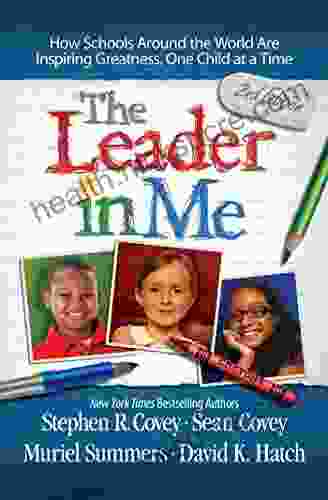
 Eddie Bell
Eddie BellHow Schools Around the World Are Inspiring Greatness One...
Education is the key...

 Quentin Powell
Quentin PowellJourney into the Heart of Alaska: Exploring the Majestic...
Alaska, the largest...
4.8 out of 5
| Language | : | English |
| File size | : | 715 KB |
| Text-to-Speech | : | Enabled |
| Screen Reader | : | Supported |
| Enhanced typesetting | : | Enabled |
| Word Wise | : | Enabled |
| Print length | : | 209 pages |


